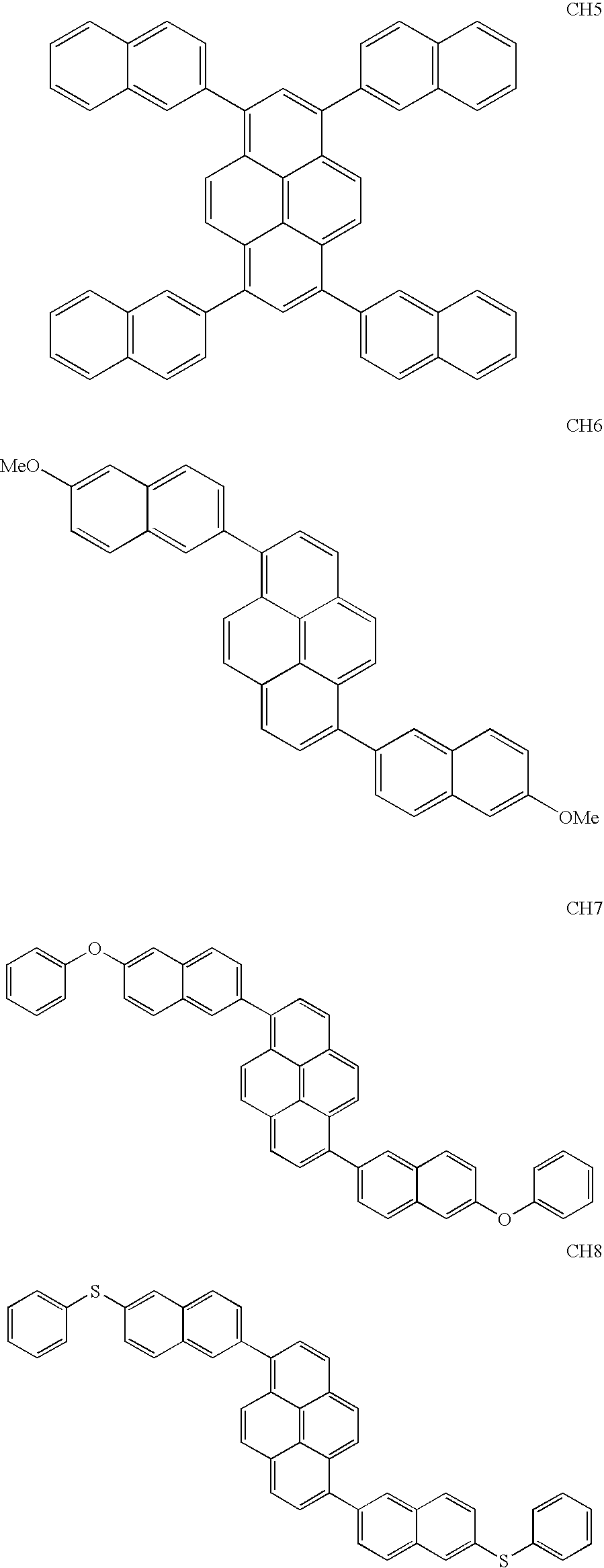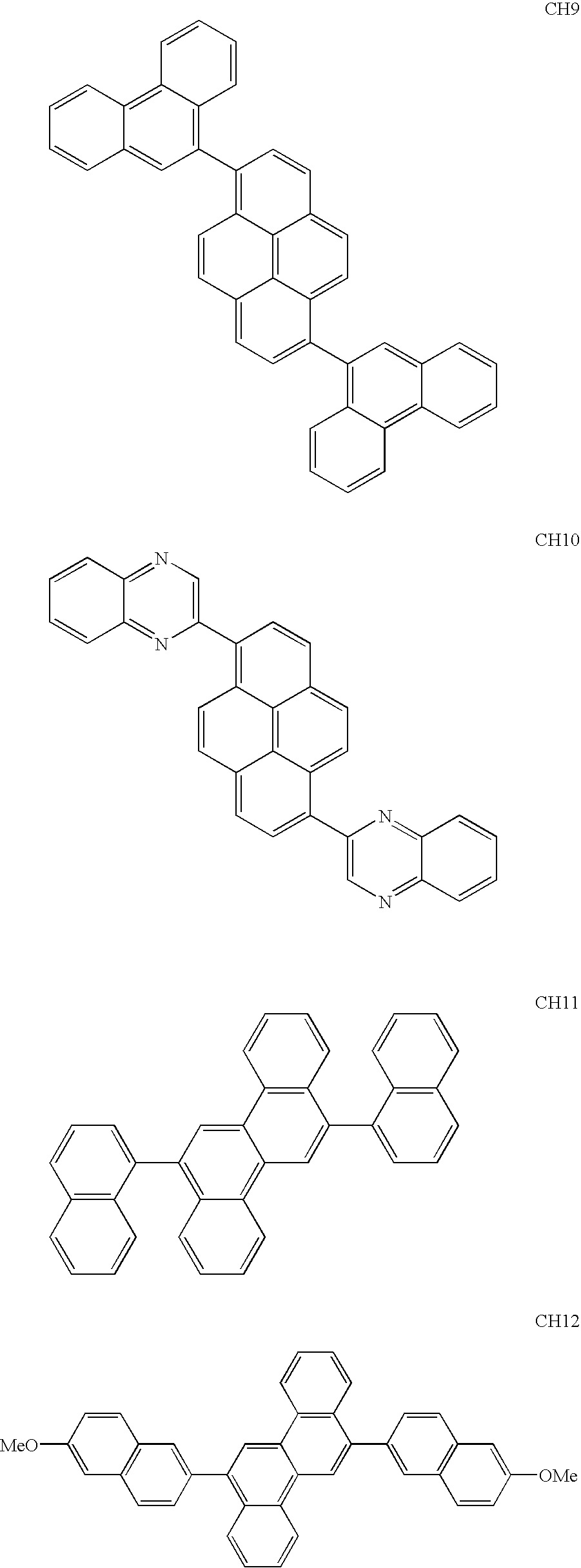Oligoarylene derivatives and organic electroluminescent devices made by using the same
- Summary
- Abstract
- Description
- Claims
- Application Information
AI Technical Summary
Benefits of technology
Problems solved by technology
Method used
Image
Examples
example 1
SYNTHESIS OF 2,6-bis(2-naphthyl)pyrene (CH1)
[0087] Under an argon atmosphere, 3 g of 2,6-dibromopyrene, 3.6 g of 2-naphthaleneboric acid available from Tokyo Kasei Co., Ltd., and 0.36 g of tetrakis(triphenylphosphine)palladium (0) available from Hiroshima Wako Co., Ltd., were dissolved in 100 mL of toluene. The resultant solution was mixed with a solution prepared by dissolving 5 g of sodium carbonate in 24 mL of water, and the mixed solution was refluxed for 10 h and allowed to stand over one night.
[0088] The obtained reaction mixture was filtered and then successively washed with water, methanol and acetone, thereby obtaining 2.9 g of a light-yellow solid.
[0089] As a result of the measurement for FD-MS (field desorption mass analysis) of the obtained compound, it was confirmed that m / z=454 was obtained relative to C36H22=454, and, therefore, the compound was identified to be 2,6-bis(2-naphthyl)pyrene (CH1) (yield: 77%).
example 2
SYNTHESIS OF 6,12-bis(1-naphthyl)chrysene (CH2)
[0090] Under an argon atmosphere, 3 g of 6,12-dibromochrysene, 4 g of 1-naphthaleneboric acid available from Tokyo Kasei Co., Ltd., and 0.36 g of tetrakis(triphenylphosphine)palladium (0) available from Hiroshima Wako Co., Ltd., were dissolved in 100 mL of toluene. The resultant solution was mixed with a solution prepared by dissolving 5 g of sodium carbonate in 24 mL of water, and the resultant mixed solution was refluxed for 10 h and allowed to stand over one night.
[0091] The obtained reaction mixture was filtered and then successively washed with water, methanol and acetone, thereby obtaining 3.2 g of a light-yellow solid.
[0092] As a result of the measurement for FD-MS of the obtained compound, it was confirmed that m / z=480 was obtained relative to C38H24=480, and, therefore, the compound was identified to be 6,12-bis(l-naphthyl)chrysene (CH2) (yield: 85%).
example 3
SYNTHESIS OF 6,12-bis(9-phenathryl)chrysene (CH3)
[0093] Under an argon atmosphere, 3 g of 6,12-dibromochrysene, 5 g of 9-phenathreneboric acid available from Tokyo Kasei Co., Ltd., and 0.36 g of tetrakis(triphenylphosphine)palladium (0) available from Hiroshima Wako Co., Ltd., were dissolved in 100 mL of toluene. The resultant solution was mixed with a solution prepared by dissolving 5 g of sodium carbonate in 24 mL of water, and the resultant mixed solution was refluxed for 10 h and allowed to stand over one night.
[0094] The obtained reaction mixture was filtered and then successively washed with water, methanol and acetone, thereby obtaining 4.2 g of a light-yellow solid.
[0095] As a result of the measurement for FD-MS of the obtained compound, it was confirmed that m / z=580 was obtained relative to C46H28=580, and, therefore, the compound was identified to be 6,12-bis(9-phenathryl)chrysene (CH3) (yield: 93%).
PUM
| Property | Measurement | Unit |
|---|---|---|
| Luminous efficiency | aaaaa | aaaaa |
| Luminescence | aaaaa | aaaaa |
Abstract
Description
Claims
Application Information
 Login to View More
Login to View More - Generate Ideas
- Intellectual Property
- Life Sciences
- Materials
- Tech Scout
- Unparalleled Data Quality
- Higher Quality Content
- 60% Fewer Hallucinations
Browse by: Latest US Patents, China's latest patents, Technical Efficacy Thesaurus, Application Domain, Technology Topic, Popular Technical Reports.
© 2025 PatSnap. All rights reserved.Legal|Privacy policy|Modern Slavery Act Transparency Statement|Sitemap|About US| Contact US: help@patsnap.com



